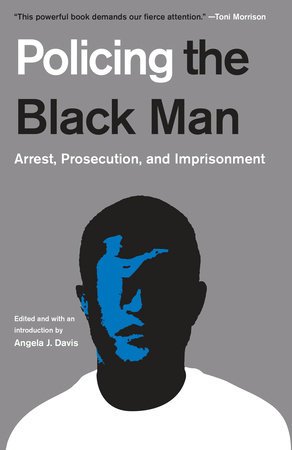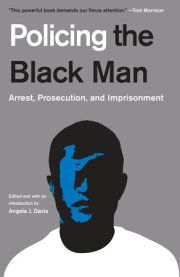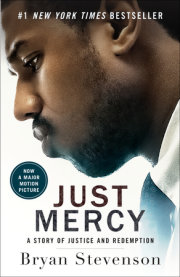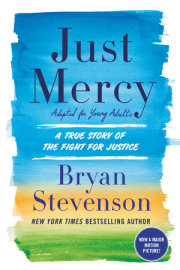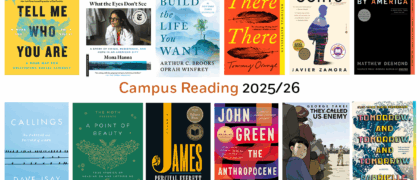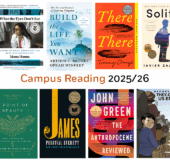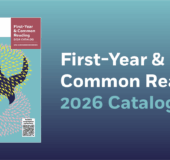IntroductionANGELA J. DAVIS
Michael Brown, Eric Garner, Tamir Rice, Walter Scott, Freddie Gray, Sam DuBose, Alton Sterling, Philando Castile, and Terence Crutcher are just some of the names on a long list of unarmed black boys and men who were killed by police officers in recent years. Although black men have been the victims of violence at the hands of the state since the time of slavery, technology and social media now permit us to literally bear witness to many of these killings, repeatedly. Millions of people have watched the video of a police officer choking Eric Garner to death as he struggled for air. Similarly, millions have watched the video of a police officer shooting Walter Scott in the back as he ran for his life. Who can ever forget the grainy footage of Tamir Rice—the twelve-year-old boy who was shot by a police officer while he played alone with a toy gun in a park near his home? Two videos—one from a police helicopter and another from a police dashboard camera—show Terence Crutcher walking away from police officers with his hands raised high in the air just before he was shot and killed. These images have evoked feelings of fear, sadness, and outrage and serve as a reminder that the lives of black men and boys continue to be devalued and destroyed with impunity at the hands of the state. To date, not one of the police officers who killed these men and boys has been convicted of a single crime.
From the arrival of the first slaves in Jamestown in 1619 to the lynchings of the nineteenth and twentieth centuries to the present day—black boys and men have been unlawfully killed by those who were sworn to uphold the law and by vigilantes who took the law into their own hands. The National Museum of African American History and Culture, which opened its doors on September 24, 2016, includes exhibits that tell the story of many of these killings. Yet these killings are not just a part of African American history. They have continued well into the twenty-first century—almost four hundred years after the beginning of slavery—and persist with remarkable frequency and brutality during a time when America elected its first African American president.
Many of these race-based killings have inspired and reinvigorated movements for change. The brutal killing of fourteen-year-old Emmett Till in Mississippi in 1955, the murder of civil rights activist Medgar Evers in 1963, and the assassination of Martin Luther King in 1968 all serve as markers on the civil rights movement timeline, as did so many other killings of black men by white racists. Each tragic killing sparked nationwide protests and renewed activism in the struggle for civil rights and racial justice in the United States.
The killing of seventeen-year-old Trayvon Martin in 2012 was a pivotal marker of racial violence against black men in the twenty-first century. Martin was killed by George Zimmerman, a white man who called the police when he saw Martin walking in his neighborhood. Zimmerman, a member of a neighborhood crime watch group, reported to the police that Martin looked “suspicious” and that he looked like he was “up to no good or on drugs or something.” Ignoring the dispatcher’s warning that he should not follow Martin, Zimmerman ultimately shot and killed him. Martin was unarmed and was on his way back to his father’s house after buying snacks at a local convenience store. Initially Zimmerman was not even charged with a crime, but after nationwide protests, he was charged with Martin’s murder. A jury ultimately acquitted him.
The killing of Trayvon Martin, the initial failure of the prosecutor to charge Zimmerman with a crime, and Zimmerman’s ultimate acquittal captured the attention of the nation. President Obama even weighed in, stating, “Trayvon Martin could have been me 35 years ago.” Martin’s killing also inspired the phrase “Black Lives Matter.” The phrase trended on Twitter and all forms of social media and was displayed on posters carried in protests after Martin’s killing and after every killing of a black man or woman by a police officer from that day forward. Black Lives Matter ultimately became a social justice movement with chapters throughout the United States and Canada.
Many unarmed black men and boys have been killed since Trayvon Martin’s tragic death five years ago. Many of the killings occurred after police officers arguably engaged in racial profiling—stopping and harassing these men for no explainable reason other than the color of their skin. In all of the cases where black men were shot and killed, the officers claimed that they felt threatened, even though the men were unarmed and often running away or retreating. In almost all of the cases, the police officers were never arrested or charged with a crime.
The tragic killings of Trayvon Martin, Michael Brown, Eric Garner, Walter Scott, Tamir Rice, Freddie Gray, and others served as the catalyst for this anthology. But these killings also inspired the contributing authors to think about all of the ways that black men are “policed”—in the broad sense of the word—heavily and harshly at every step of the criminal process. In fact, black men are policed and treated worse than their similarly situated white counterparts at every step of the criminal justice system, from arrest through sentencing. These unwarranted disparities exist whether black men are charged with crimes or are victims of crimes. Police officers stop, search, and arrest black men far more frequently than white men engaged in the same behavior. Prosecutors charge black men more frequently and with more serious crimes than white men who engage in the same behavior. And there are disproportionate numbers of black men in the nation’s prisons and jails. Criminal defendants, regardless of their race, are punished less harshly when their victims are black men. This anthology explores and explains the “policing” of black men—from slavery to the present day and at every stage of the criminal process and beyond.
Why Black Men?Black men are not the only people of color to be treated worse than their similarly situated white counterparts at every step of the criminal process. Black women, Latino/a men and women, Native Americans, and other people of color also experience violence at the hands of the state and discriminatory treatment in the criminal justice system, as do people who are gay, lesbian, and/or transgender. This book’s focus on black men in no way trivializes the experiences of all people who face these harms.
While acknowledging that other groups have been and continue to be oppressed and discriminated against, this book focuses on black men. In many ways, the experience of black men in the criminal justice system is unique. The most noticeable difference is that they are impacted more adversely than any other demographic in the United States—at every stage of the process.
Black Boys Are Disproportionately Arrested and DetainedBlack boys are more likely to be referred to the juvenile justice system than any other children. In 2011, black boys represented the greatest percentage of children placed in juvenile detention—903 black boys per 100,000 were sent to detention as compared to 125 black girls. A Rhode Island study found that black boys were 9.3 times more likely to spend time in juvenile detention than white boys.
Over half the students arrested at school in the United States and referred to the juvenile justice system are black or Hispanic. While black students represent only 16 percent of student enrollment, they represent 27 percent of students referred to law enforcement and 31 percent of students subjected to in-school arrests. Black male students alone make up 18 percent of all referrals and arrests.
Black Men Are Disproportionately ArrestedAfrican Americans are 2.5 times more likely to be arrested than whites and 49 percent of black men can expect to be arrested at least once by age twenty-three compared to 44 percent of Hispanic men and 38 percent of white men. Police officers are permitted to stop and frisk individuals if they have “reasonable suspicion” that crime is afoot and that the person is armed and dangerous. However, numerous studies have shown that the practice of racial profiling has resulted in black men being targeted and disproportionately stopped, frisked, and arrested.
For example, the New York Civil Liberties Union analyzed the New York Police Department’s 2011 stop-and-frisk database and found that 41.6 percent of all stops were of black and Latino men between the ages of fourteen and twenty-four, even though they make up only 4.7 percent of the population of New York. The same study found that no crime had been committed in 90 percent of the stops. Black men were disproportionately stopped. The number of stops of black men exceeded the city’s entire population of black men by 9,720.
Black Men Are More Likely to Be Killed or Injured During a Police EncounterWhile more whites are killed by law enforcement than people of color, African Americans are killed at a disproportionate rate. In fact, black men are 21 times more likely to be killed by police than white men. Between 2010 and 2012, black boys ages fifteen through nineteen were killed at a rate of 31.17 per million compared to 1.47 per million for white boys of the same age group. In addition, a significant number of black men killed by police were unarmed. Data collected from January 1, 2015, to May 31, 2015, revealed that African Americans killed by the police were twice as likely to be unarmed as whites.17 An overwhelming 95 percent of these victims were men.
Not all violent encounters with the police result in death, but black men fare worse in nonfatal encounters as well. A study conducted by the Justice Department’s Bureau of Justice Statistics (BJS) examined police use of nonfatal force between 2002 and 2011. The study found that African Americans were more likely to experience nonfatal force at the hands of police officers than either Hispanics or whites.
Black Men Are Disproportionately Imprisoned and Receive Longer SentencesAfrican Americans make up approximately 35 percent of the prison population in the United States, and by the end of 2015, black
men constituted 34 percent of the American prison population. In 2015, 5,165 in 100,000 black men ages twenty-five to twenty-nine were imprisoned compared to 2,165 Hispanic men and 921 white men of the same ages. Remarkably, the number of black men in prison or jail, on probation, or on parole by the end of 2009 roughly equaled the number enslaved in 1850. One in three black men born in 2001 can expect to be incarcerated in his lifetime.
Black men serve more time for their crimes than others similarly situated. Data collected by the U.S. Sentencing Commission between December 2007 and 2011 revealed that black men in federal prisons received sentences 19.5 percent longer than white men sentenced for the same crime. Blacks are also disproportionately sentenced to death. As of 2014, the national death row population is approximately 42 percent black, while the overall black population is only 13.6 percent.
###
For all of these reasons, this anthology focuses on the plight of black men and boys. The extraordinarily disproportionate mistreatment of black boys and men at every step of the criminal process is explored in depth. As the essays make clear, the issues and problems are complex, as are the solutions. The authors are scholars, lawyers, and activists who have studied and, in some instances, personally experienced the phenomena about which they write. In these informative, well-researched, and sometimes poignant essays, the authors examine and explain the policing of the black man.
Copyright © 2017 by Angela J. Davis. All rights reserved. No part of this excerpt may be reproduced or reprinted without permission in writing from the publisher.

